Ten video game firsts - First job, first kiss, first pet -- firsts are a big part of life, and so it is with games.From MMOs to Madden, from sophisticated CG cinematics to gritty shooters, gaming's biggest franchises, genres, and techniques all had to get started somewhere. Journey back in time with us as we excavate the obscure origins of the gaming world we take for granted today.
First 3D shooter: Wolfenstein 3D
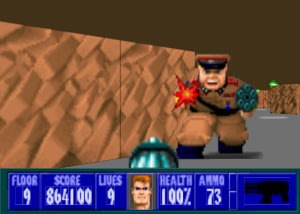
Conventional wisdom holds that the first true first-person shooter -- combining texture-mapped 3D graphics, a first-person perspective, and arcade-quick shooter action -- was id Software's seminal hit, Wolfenstein 3D. And, as it happens, conventional wisdom is mostly correct. Sort of.
Shortly before the release of Wolfenstein 3D (which is itself based on the classic 8-bit adventure Castle Wolfenstein), id took a dry run at the same technology with 1992's Catacomb 3D, a fantasy shooter in which gamers battled enemy goblins with an arsenal of fireballs. All the pieces of the genre were already more or less in place, but Catacomb lacks the visible firearm and ammunition counter that make Wolfenstein seem so familiar to today's Call of Duty devotees.
Earlier games had already established some of the genre's touchstones — 1988's The Colony and 1986's Mercenary, for example, allowed users to freely roam a 3D rendered environment — and later titles, such as 1995's Terminator: Future Shock, which pioneered mouselook, would add essential refinements. But it's safe to say it all started with Wolfenstein.
First cutscenes: Space Invaders Part II
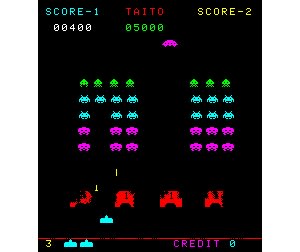
Cinematic cutscenes are such a ubiquitous part of video games nowadays that it's hard to remember it wasn't always that way.
Descended more from pinball machines and skeeball than from movies or television, the earliest games usually made storytelling a pretty low priority. Still, a few key games laid the groundwork, beginning with 1980's Space Invaders Part II. The sequel to the iconic shooter featured brief intermissions between levels in which enemy invaders would fly offscreen, broadcasting an SOS.
The same year, Pac-Man featured comical interludes between stages, and the year after, Donkey Kong would open with a short scene showing the angry ape clambering up scaffolding with a helpless damsel clutched under his arm. Perhaps it's no coincidence that three of the most iconic videogames were among the first to employ digital storytelling.
First real-time-strategy game: Herzog Zwei
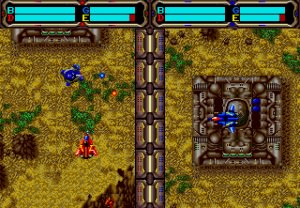
Herzog Zwei -- released in 1989 for the Sega Genesis -- wasn't the first title to feature some form of strategic gameplay freed from the constraints of alternating player turns. 1981's Utopia (Intellivision), 1984's Air Support (Commodore 64), and 1988's Modem Wars (IBM PC) all featured certain elements of what would come to be known as the RTS. But it was in TechnoSoft's quirky sci-fi offering — in which players commanded a transforming mech at the head of an army of smaller units — that everything came together.
Players could purchase and command a variety of units, while permanent outposts could be commandeered to provide more production resources. The basic formula — gather resources, build units, go forth and smash the enemy — remains essentially unchanged all the way up to today's StarCraft II. Considering the Starcraft series' enormous impact on e-sports as a worldwide pastime, Herzog Zwei may just be the most important video game most people have never heard of.
First online multiplayer game: Snipes
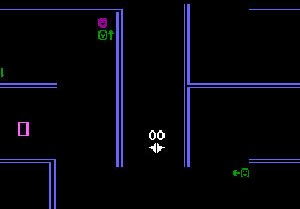
Then again, 1983's Snipes -- a graphically crude maze game -- might give Herzog Zwei a run for its money.
A simple arcade game in which players must destroy the nests of annoying pests, Snipes had nothing especially distinguishing…except that it was designed for multiple players to join the same game remotely, using code that would evolve into Novell's influential Netware operating system. Every pick-up game of Call of Duty or Counterstrike, every online deathmatch, and every Starcraft tournament can ultimately trace its lineage back to this unassuming title.
First handheld game: Mattel Auto Race
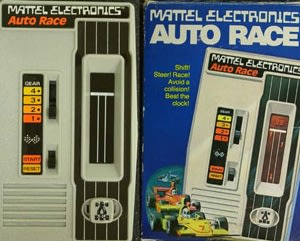
Years before the Gameboy was even a twinkle in Nintendo's eye, Mattel, makers of the Intellivision home console, was pioneering the handheld gaming market with 1977's Auto Race.
A crude driving game in which the player cruised down a three-lane racetrack represented by simple LED lights, Auto Race used about half a kilobyte of memory — or, to put it in perspective, slightly more than this sentence takes up. Speed was controlled via a four-speed gearshift, and the car could alternate among three different lanes of traffic to dodge oncoming cars. The more popular Mattel Football handheld would release soon afterward.
First virtual online world: Neverwinter Nights
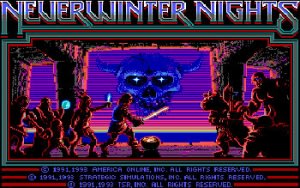
Whether you still raid dungeons in World of Warcraft or prefer the far away galaxy of Star Wars: The Old Republic, you owe a lot to Neverwinter.
The design of most modern MMOs harks back to 1991's "DikuMUD," a text-based Usenet adventure coded by Danish Dungeons & Dragons devotees. DikuMUD is itself derived from 1978's Multi-User-Dungeon, wherein the much-used 'MUD' acronym got its start.
But enough history: the first commercially-released, graphical online role playing game appears to be 1991's Neverwinter Nights (not to be confused with 2000's Bioware title of the same name). Playable over AOL, Neverwinter Nights kept armchair adventurers busy until 1997, by which time it had amassed an impressive 115,000 subscribers, with up to 500 players interacting together on a single server.
First 'Sims'-type game: Little Computer People
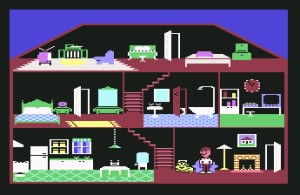
Fifteen years before Will Wright's squabblin', workin', cookin', lovin' virtual humanoids burst on the PC gaming scene to spawn a seemingly-endless parade of sequels, spinoffs and expansions, Activision laid the groundwork with 1985's Little Computer People.
Though little remembered now, LCP was years ahead of its time. Via a cutaway view of a tiny digital dollhouse, the game tasked players with feeding and caring for their computerized pet. The Little Person could talk on the phone, play the piano, and even type adorable letters to its caretaker.
First sports game: Odyssey Football
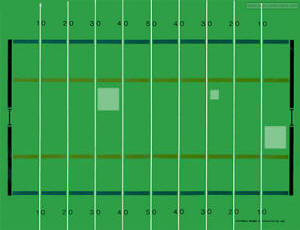
It turns out that the first home console ever released -- the Magnavox Odyssey, launched in 1972 -- featured Football as one of the original 12 games bundled with the system (three others were Tennis, Hockey, and Ski).
"Just like the pros," reads the Watergate-era ad copy. "Plan your own strategy. Pass, run, even kick. Touchdown!" In truth, the game was exceedingly basic and required a plastic television overlay to make it resemble a gridiron at all, a far cry from Madden's hyper-realism.
First full musical score: Pitfall II
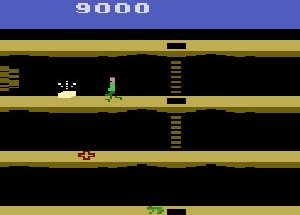
Video games have made use of music almost since the beginning: who could forget, for instance, the sinister, Jaws-esque two-note thrum that accompanied the action in 1979's Asteroids, accelerating as the number of rocks onscreen decreased?
But 1984's Pitfall II: Lost Caverns -- sequel to the Atari 2600 blockbuster -- upped the ante with a four-channel musical theme so sophisticated it required a custom chip built into the game cartridge. A rousing march clearly inspired by John Williams's theme from 'Raiders of the Lost Ark,' the tune, composed by Tim Shotter, was cleverly integrated into gameplay in a way that anticipated today's 'procedural' music: the brassy main fanfare would kick in every time Pitfall Harry scooped up another treasure, while his death would trigger modulation into a mournful minor-key version of the same melody. On the evolutionary path from primordial blips and bloops to today's full-orchestra extravaganzas, Pitfall II marked a critical step.
First downloadable game service: PlayCable
Steam. OnLive. Direct2Drive. Xbox Live Arcade. Digital distribution is usually viewed as a child of the new millennium. Lost in the mists of history, though, are two online game distribution services that were literally decades ahead of their time.
1981's PlayCable allowed subscribers to download Intellivision games over their cable TV line, while 1983's Gameline provided a similar service to Atari 2600 users, albeit over the telephone. Barely noticed in their own time, such services blazed a trail that wouldn't be followed up on for over twenty years. Skeptical? Check out this 30-year-old ad for PlayCable featuring none other than Mickey Mantle:
Blog : Beautiful Scene | 10 video game firsts
No comments:
Post a Comment